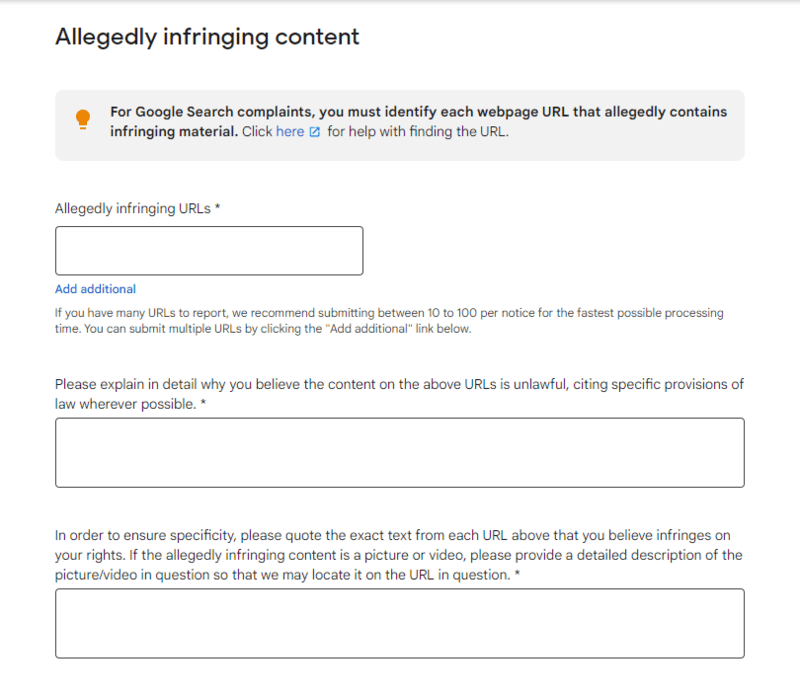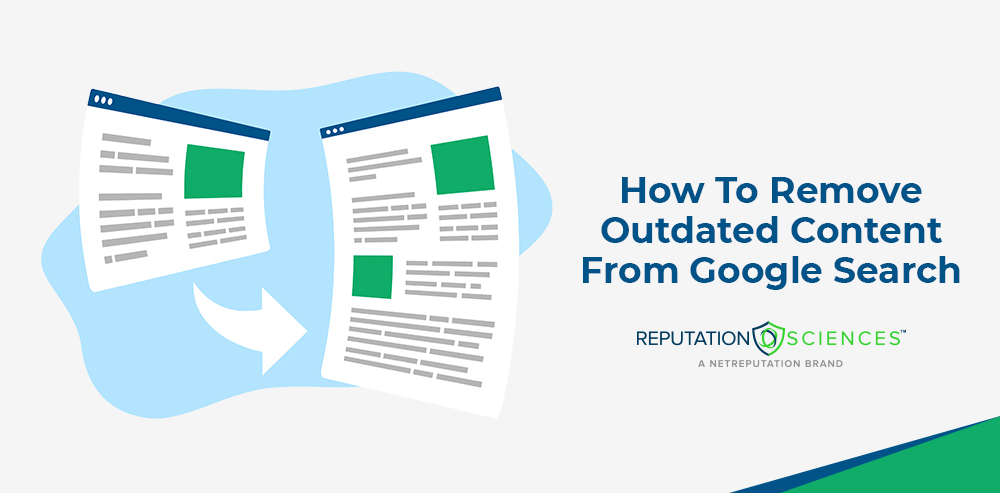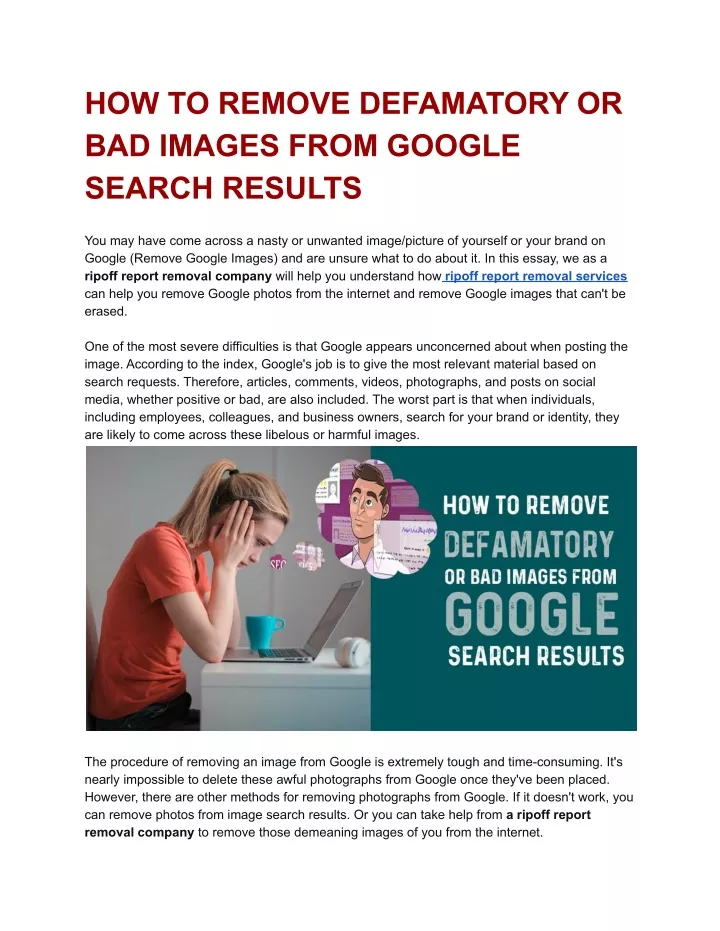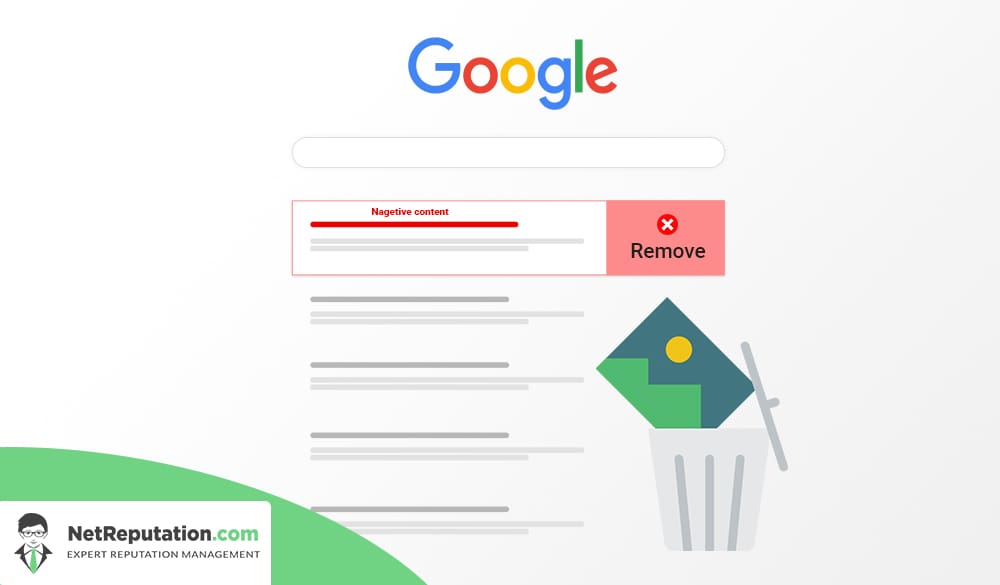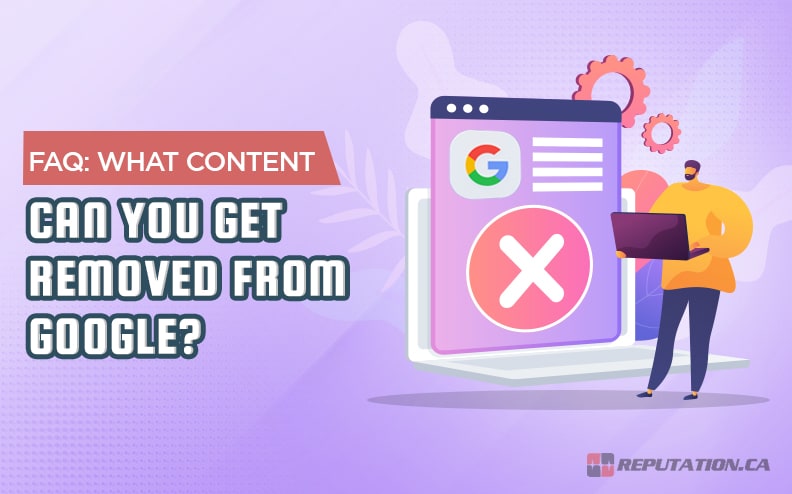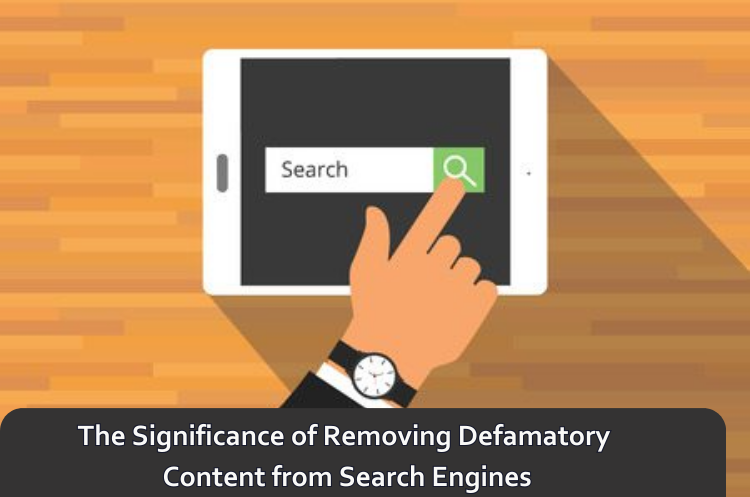How To Remove Defamatory Content From Google
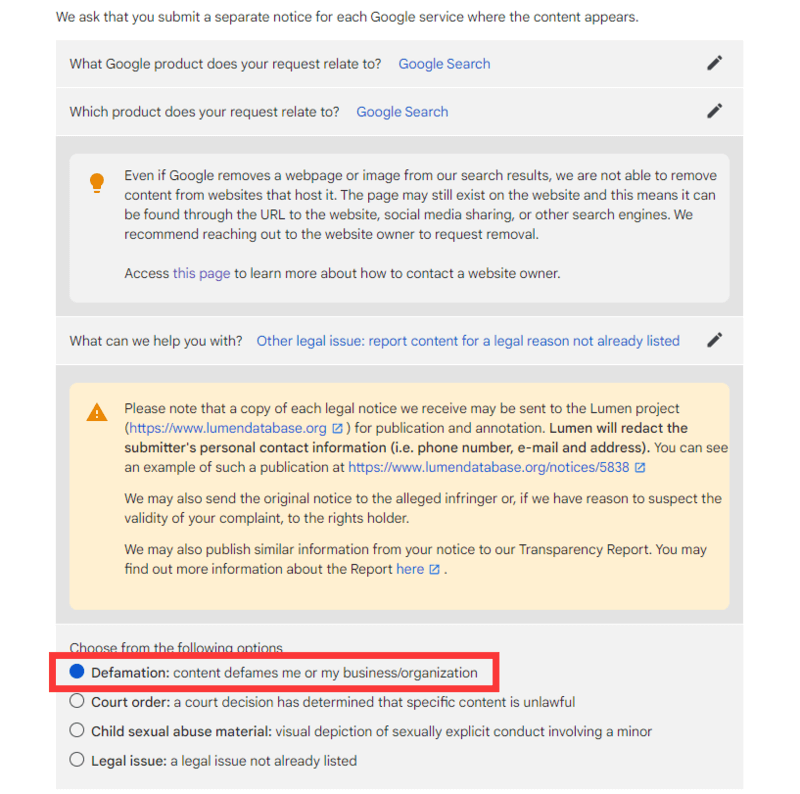
The internet, a vast repository of information, also harbors the potential for immense reputational damage. Defamatory content appearing in Google's search results can significantly impact individuals and businesses, leading to financial losses, emotional distress, and irreparable harm to their standing.
Successfully removing such content requires a multi-faceted approach, combining legal understanding, technical know-how, and persistent effort. This article explores the pathways available to those seeking to cleanse their online presence of damaging and untrue statements.
Understanding Defamation and Google's Role
Defamation, in legal terms, is a false statement presented as a fact that harms the reputation of another person or entity. It generally falls into two categories: libel (written defamation) and slander (spoken defamation). However, proving defamation can be complex, requiring evidence of falsity, publication, identification, and damages.
Google, as a search engine, indexes and displays information from across the web. It is not the originator of the content, but its search results act as a powerful amplifier, making defamatory statements easily accessible to a global audience. This amplification effect underscores the urgency of addressing defamatory content appearing in Google searches.
Google operates under the Digital Millennium Copyright Act (DMCA) and the Communications Decency Act (CDA) Section 230, which provide certain protections to online service providers from liability for user-generated content. This protection, however, is not absolute, and Google can be compelled to remove content in certain circumstances.
Steps to Remove Defamatory Content from Google
The process of removing defamatory content from Google typically involves the following steps:
1. Document and Preserve Evidence
Before taking any action, it's crucial to meticulously document the defamatory content. This includes taking screenshots, saving web pages as PDFs, and noting the date and time the content was accessed. Preserving this evidence is vital for legal proceedings and communications with Google.
Carefully analyze the content to identify the specific statements that are false and damaging. Understanding the nature of the defamation will inform your strategy for removal.
2. Contact the Website Owner
The most direct approach is to contact the owner or administrator of the website hosting the defamatory content. A polite but firm request for removal, explaining the false and damaging nature of the content, may be successful. Many website owners are willing to remove content if it is demonstrably false and harmful.
If a takedown request is ignored, consider sending a formal cease and desist letter from an attorney. This letter will outline the legal basis for the claim and demand the immediate removal of the defamatory content.
3. Utilize Google's Removal Tools
Google provides several tools for reporting content that violates its policies. The specific tool to use depends on the type of content and the nature of the violation.
For content that violates Google's content policies, such as hate speech or illegal activities, use the "Report Inappropriate Content" feature. For content that infringes on copyright, submit a DMCA takedown notice.
Google also offers a tool to remove content from its search results that contains personal information, such as social security numbers or bank account details, which may be subject to doxxing.
4. Legal Action
If other methods fail, consider pursuing legal action against the originator of the defamatory content. A successful defamation lawsuit can result in a court order compelling the removal of the content and potentially awarding damages to the injured party. Legal recourse also allows for discovery, which can reveal the identity of anonymous posters, or the source of the defamatory material.
A court order compelling removal can be presented to Google, which is generally required to comply. Legal battles can be expensive and time-consuming, so it is important to carefully weigh the costs and benefits before proceeding.
5. Online Reputation Management (ORM)
Even if defamatory content is removed from Google, it may still exist elsewhere online. ORM involves strategies to push down negative search results and promote positive content. This includes creating and optimizing websites, social media profiles, and blog posts to rank higher in search results than the negative content.
ORM is a long-term strategy that requires consistent effort. It can be an effective way to mitigate the damage caused by defamatory content, even if the content itself cannot be completely removed.
Challenges and Considerations
Removing defamatory content from Google is often a challenging process. One significant obstacle is the difficulty of proving defamation, particularly if the statements are opinions or exaggerations rather than outright falsehoods. Free speech protections can also complicate matters.
Another challenge is the potential for the "Streisand effect," where attempts to suppress information inadvertently draw more attention to it. It’s named after Barbra Streisand whose attempts to suppress an aerial photograph of her mansion inadvertently brought it to the attention of the public.
Engaging in a public dispute or filing a lawsuit can sometimes amplify the negative attention. Before taking any action, it is important to carefully consider the potential consequences.
According to a 2023 report by Statista, approximately 45% of adults in the United States have experienced some form of online harassment or abuse. Defamation can be a form of this harassment, highlighting the widespread nature of the problem.
The Future of Online Reputation Management
As the internet continues to evolve, the challenges of online reputation management will only become more complex. Artificial intelligence (AI) is being used to generate and spread fake news and defamatory content, making it more difficult to detect and remove.
However, AI is also being developed to help individuals and businesses monitor their online reputations and identify potentially damaging content. New technologies are emerging to help verify the authenticity of online information and combat the spread of disinformation.
Ultimately, protecting one's online reputation requires a proactive approach. This includes regularly monitoring search results, actively managing social media presence, and being prepared to take swift action when defamatory content appears.

